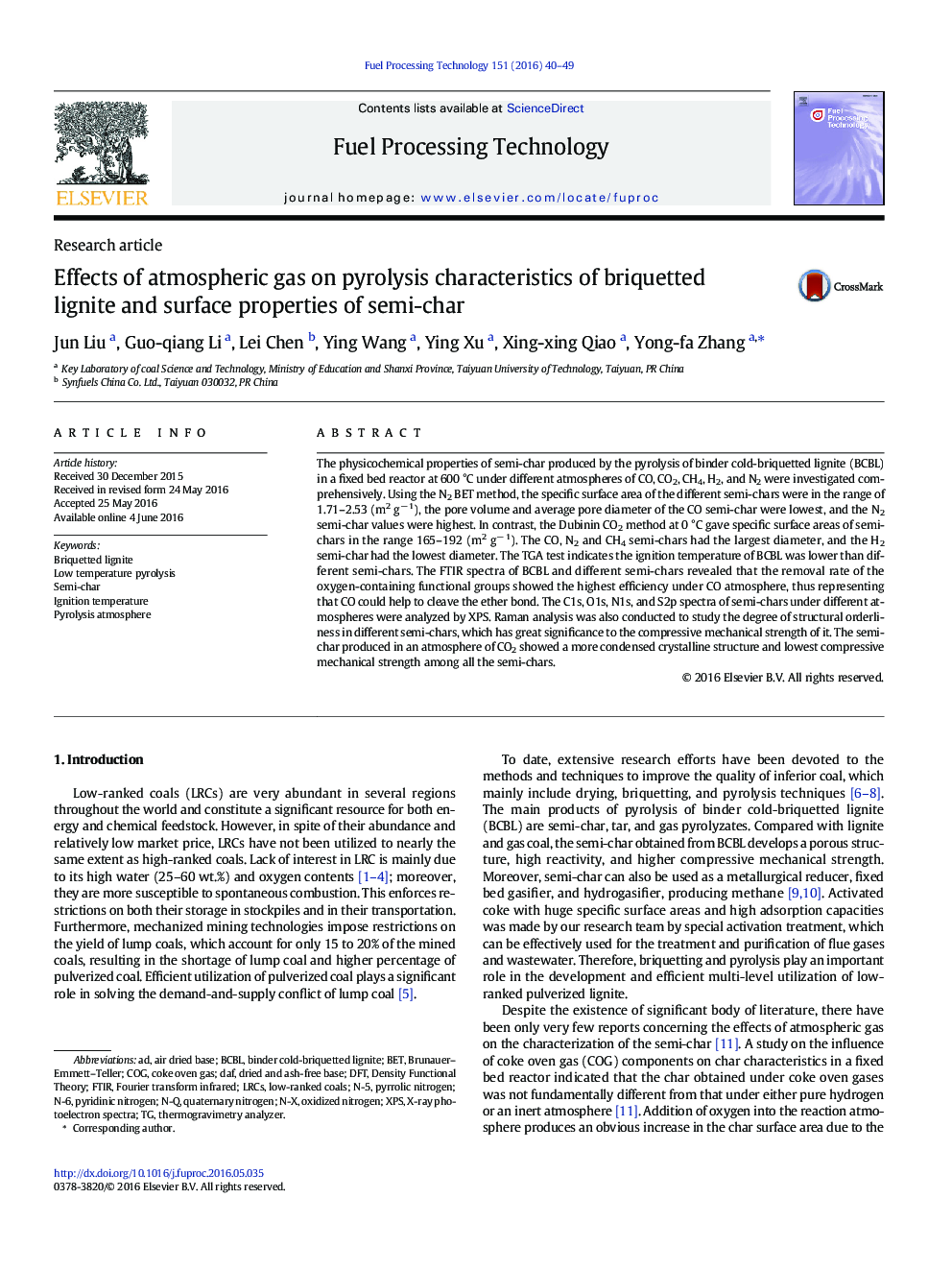| Article ID | Journal | Published Year | Pages | File Type |
|---|---|---|---|---|
| 6656590 | Fuel Processing Technology | 2016 | 10 Pages |
Abstract
The physicochemical properties of semi-char produced by the pyrolysis of binder cold-briquetted lignite (BCBL) in a fixed bed reactor at 600 °C under different atmospheres of CO, CO2, CH4, H2, and N2 were investigated comprehensively. Using the N2 BET method, the specific surface area of the different semi-chars were in the range of 1.71-2.53 (m2 gâ 1), the pore volume and average pore diameter of the CO semi-char were lowest, and the N2 semi-char values were highest. In contrast, the Dubinin CO2 method at 0 °C gave specific surface areas of semi-chars in the range 165-192 (m2 gâ 1). The CO, N2 and CH4 semi-chars had the largest diameter, and the H2 semi-char had the lowest diameter. The TGA test indicates the ignition temperature of BCBL was lower than different semi-chars. The FTIR spectra of BCBL and different semi-chars revealed that the removal rate of the oxygen-containing functional groups showed the highest efficiency under CO atmosphere, thus representing that CO could help to cleave the ether bond. The C1s, O1s, N1s, and S2p spectra of semi-chars under different atmospheres were analyzed by XPS. Raman analysis was also conducted to study the degree of structural orderliness in different semi-chars, which has great significance to the compressive mechanical strength of it. The semi-char produced in an atmosphere of CO2 showed a more condensed crystalline structure and lowest compressive mechanical strength among all the semi-chars.
Keywords
Related Topics
Physical Sciences and Engineering
Chemical Engineering
Chemical Engineering (General)
Authors
Jun Liu, Guo-qiang Li, Lei Chen, Ying Wang, Ying Xu, Xing-xing Qiao, Yong-fa Zhang,
